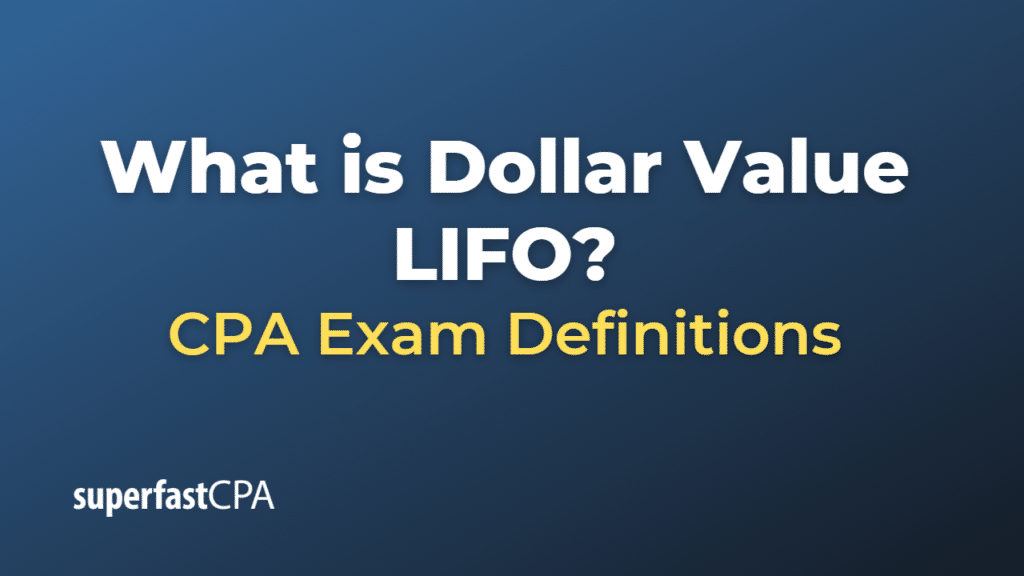Dollar Value LIFO
Dollar-Value LIFO (Last-In, First-Out) is a method of inventory valuation that measures changes in the dollar value of the inventory, rather than changes in the physical quantity of the goods in inventory. This method assumes that the last goods added to inventory are the first ones to be sold.
“Dollar-Value LIFO” is a variation of the LIFO method that was developed to minimize the impact of inflation or deflation on inventory valuation. Instead of tracking individual items, Dollar-Value LIFO tracks the total value of the inventory.
Here’s how Dollar-Value LIFO works:
- The inventory is divided into pools. These pools can be individual products, product lines, or other groups.
- A base year is selected, and the value of the inventory in each pool is calculated for the base year.
- In each subsequent year, the dollar value of the inventory in each pool is compared with the base year.
- If the value of the inventory has increased, the increase is assumed to be due to the purchase of additional inventory, which is added to the LIFO layer for that year at the current year’s cost.
- If the value of the inventory has decreased, it’s assumed that older inventory has been sold, and the LIFO layer for the earliest year still in inventory is reduced or eliminated.
- When calculating the cost of goods sold (COGS), the most recent LIFO layers (those with the highest cost) are used first.
This method helps in matching current costs with current revenues in the income statement. However, it can be more complex to implement than other inventory valuation methods.
Example of Dollar Value LIFO
Let’s say you own a business that sells one type of item. The base year is 2021, and you have 100 units in inventory that you purchased for $10 each, so your total base-year inventory cost is $1,000.
In 2022, the price of the items increases to $12 each due to inflation, and you purchase 50 additional units. The end-of-year inventory count shows you have 130 units on hand.
To apply the Dollar-Value LIFO method:
- Calculate the ending inventory at year-end prices: 130 units * $12/unit = $1,560.
- Convert this to base-year prices. You know that the prices have increased by 20% from the base year (from $10 to $12), so you adjust the ending inventory value for this price increase: $1,560 / 1.20 = $1,300.
- The difference between this value and the base-year inventory cost represents the value of the additional layer you’ve added to your inventory: $1,300 – $1,000 = $300.
- Now calculate the Dollar-Value LIFO inventory value: add the value of the additional layer at current-year prices to the base-year inventory cost: $1,000 (base year) + ($300 * 1.20 price index) = $1,360.
So, under the Dollar-Value LIFO method, your inventory at the end of 2022 would be valued at $1,360.
Remember, this is a simplified example and doesn’t take into account some of the complexities that can arise when you have multiple inventory pools or when prices decrease. Always consult with an accounting professional or financial advisor when dealing with inventory valuation.












